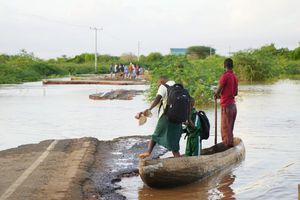Fulfil climate promise
What you need to know:
- President William Ruto's turnaround to embrace natural gas is a dangerous path for Kenya’s climate action ambition and, specifically, his pledge to realise a 100 per cent transition to clean energy.
- It means the demand for the dirty source of energy will continue to grow, consequently motivating more Tanzanian supplies.
- Kenya, therefore, ought to join the rest of the world in embracing the fossil fuel non-proliferation treaty and protecting the lives of the current and future generations.
On his first foreign trip as Head of State, President William Ruto held bilateral talks with Tanzania’s President Samia Suluhu Hassan and committed to building a 600km Tanzania-Kenya gas pipeline that, according to reports, will cost $1.1 billion (Sh132 billion).
His turnaround to embrace natural gas is a dangerous path for Kenya’s climate action ambition and, specifically, his pledge to realise a 100 per cent transition to clean energy.
It means the demand for the dirty source of energy will continue to grow, consequently motivating more Tanzanian supplies.
This demand-supply dynamic will undermine efforts to decarbonise the energy system and contribute to global warming—and hence, climate change—as the revenue streams the government relies on for development evaporate while industries reliant on fossil fuels grapple with stranded assets and workers.
That will frustrate global efforts to meet the Paris Agreement’s temperature goal, to which Kenya is committed, to abate greenhouse gas emissions by 32 per cent by 2030.
Kenya, therefore, ought to join the rest of the world in embracing the fossil fuel non-proliferation treaty and protecting the lives of the current and future generations.
Remember, Tanzania and Uganda are embroiled in a controversial investment spearheaded by the French oil giant TotalEnergies and China National Offshore Oil Corporation to build the world’s longest heated oil pipeline, which also poses a major threat to the climate, biodiversity and livelihoods of people.
To move in tandem with the rest of the world in decisively dealing with the climate crisis, Kenya must champion and finance a just transition towards clean energy and invest more in sources such as wind farms—like the Ngong Hills Wind Farm, Meru Wind Power Station, Isiolo Wind Power Station and Marsabit Wind Power Station.
It should invest in solar energy and green hydrogen and also revive and establish more geothermal plants to complement the ones in the Rift Valley.
The President must lead from the front and fulfil his promise.





